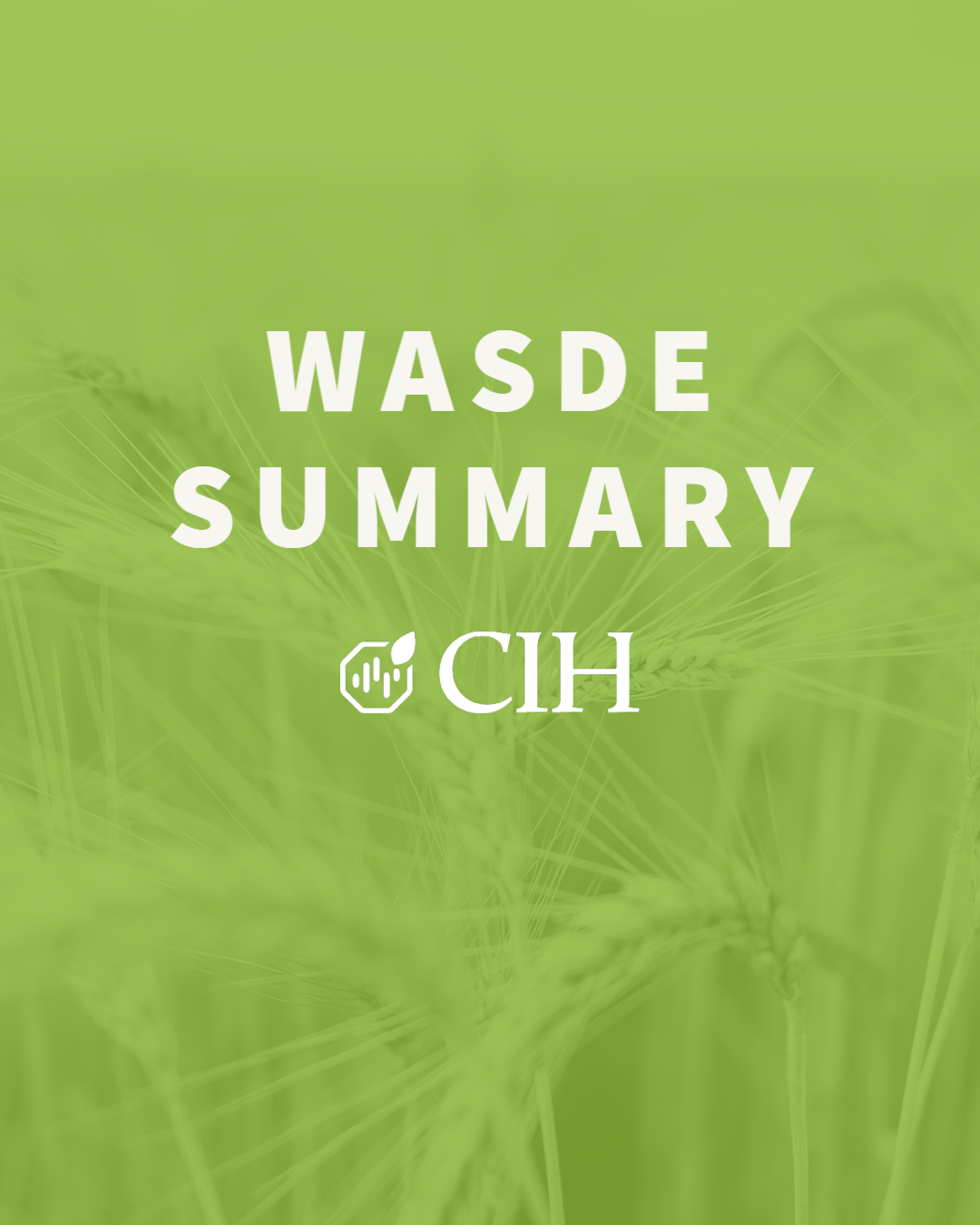
July 12, 2024
JULY 2024 WASDE REPORT SUMMARY AND NOTES:
Today’s WASDE report was relatively supportive for corn, neutral soybeans, and slightly bearish wheat relative to analysts’ pre-report expectations. Market attention will remain focused on signs of new crop export demand and weather across the central U.S. Market commentary will soon shift to private yield estimates from crop tours across the major production areas.
For corn, the domestic 2024/25 balance sheet called for larger supplies, greater use, and slightly lower ending stocks. Beginning stocks were lowered 145 million bushels from last month on a large increase in old crop use. Production was increased higher by 240 million bushels on greater planted and harvested area. Pegged at 15.1 billion bushels, this was nearly identical to the average analysts’ pre-report estimate of 15.060 billion bushels. Total use was increased by 100 million bushels due to both feed and residual use as well as exports. Ending stocks were lowered by 5 million bushels to 2.097 billion bushels. This was lower than the average pre-report estimate and below the range of estimates (2.124 to 2.498 billion). The season- average price received by producers was lowered a dime to $4.30 per bushel. The new crop global balance sheet called for reduced production and higher ending stocks. Production was lowered for the EU, Canada, and Russia. Global corn stocks, pegged at 311.6 million metric tons was nearly identical to the average pre-report estimate of 312 million metric tons.
Corn exports increased from last month’s estimate despite slow pace of new crop sales:

Corn stocks-to-use ratio expected to climb for 4th straight year:

For soybeans, the domestic 2024/25 balance sheet called for lower production and ending stocks. Production was lowered from last month on a slight reduction in harvested area to 85.3 million acres. Use was unchanged from June’s forecast. New crop ending stocks were lowered by 20 million bushels from last month to 435 million bushels. This was slightly below the average analysts’ pre-report estimate of 445 million bushels but within the range of estimates (350 to 507 million). The season-average price received by producers was lowered by a dime to $11.10 per bushel. The global balance sheet called for unchanged production and slightly lower ending stocks. Global stocks were pegged at 127.8 million metric tons, slightly higher than the average pre-report estimate of 127.1 million metric tons but within the range of estimates (125.5 to 128.1 million).
Soybean exports unchanged from last month despite outstanding sales at 10-year low for this point in the marketing year:

Soybean ending stocks lowered from last month, expected to remain at highest level since 2019/20:

For wheat, the domestic 2024/25 balance sheet called for larger supplies outweighing an increase in use, ultimately leading to higher ending stocks. Supplies were increased on both production as well as beginning stocks. Production was increased on both area and yields. Feed and residual use was increased by 10 million bushels to 110 million on larger supplies. Exports were also increased by 25 million bushels to 825 million. Projected ending stocks increased by 98 million bushels to 856 million. If realized, this would be slightly higher than the average pre-report estimate of 793 million bushels and mark a 5-year high. The season average farm price was reduced by 80 cents to $5.70 per bushel. The global wheat outlook called for larger supplies, higher use, and larger ending stocks. Supplies were increased on higher production in the U.S., Pakistan, and Canada. Global trade was virtually unchanged from last month while food, seed, and industrial use was raised. Projected ending stocks were increased by 5 million metric tons to 257.2 million. This was slightly above the upper range of analysts’ pre-report estimates (250 to 256 million).
All wheat production forecast to increase 11% y/y, reach highest level since 2016/17:

All wheat ending stocks pegged to increase for 3rd straight year:

Questions?
Contact us here